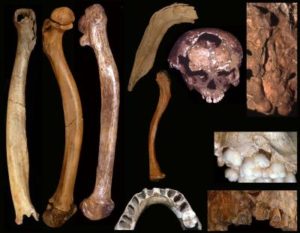
PROCEEDINGS OF THE NATIONAL ACADEMY OF SCIENCES—A study* finds that developmental anomalies in fossil individuals from the Pleistocene occurred at higher-than-expected rates. Multiple skeletal abnormalities have been identified among fossil Homo specimens from the Pleistocene, including examples from the last 200,000 years, preserved by the practice of burial, as well as cases as old as 1.5 million years. Erik Trinkaus calculated the probability of discovering disorders from abnormal growth and development in the limited samples preserved from the Pleistocene, based on both modern human incidences of similar disorders and known size and shape distributions of Pleistocene samples. Around one-third of the abnormalities were classified as moderately common, with abnormalities expected in less than 1-5% of cases. Most of the rest of the abnormalities were rare to extremely rare, expected in less than 0.01-0.1% of cases, or had no known cause in recent humans. According to the author, the results stimulate further research on possible demographic factors, such as inbreeding, behind the unusually high incidence of skeletal abnormalities, the social structures in which such individuals lived, burial practices, and chronic stresses faced by Pleistocene foragers.
_________________________________

Examples of developmental abnormalities in Pleistocene people. Left to right: the Tianyuan 1, Sunghir 3 and Dolní V?stonice 15 abnormal femora, Center, top to bottom: the Palomas 23 mandibular “flange”, the Rochereil 3 cranial lacuna, the long Sunghir 1 clavicle, the Malarnaud 1 incisor agenesis. Right, top to bottom: the Shanidar 1 sacral hiatus, the Pataud 1 polygenesis, and the Dolní V?stonice 16 cleft palate. Image courtesy of Erik Trinkaus.
_________________________________
Article Source: PNAS news release
*”An abundance of developmental anomalies and abnormalities in Pleistocene people,” by Erik Trinkaus.



